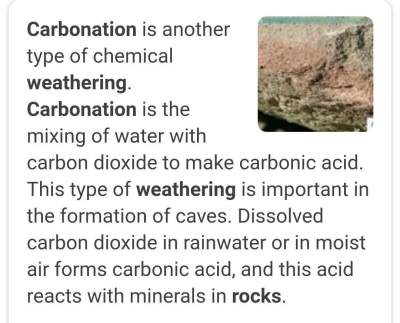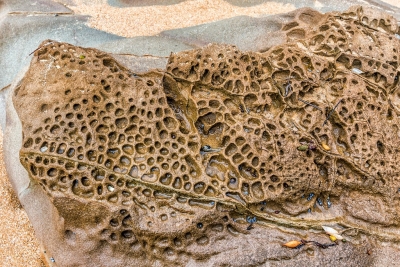WHAT IS CARBONATION?

|
Decaying leaves and plant matter give out carbon dioxide, which is also present in the air around us. Carbon dioxide dissolves in water to create carbonic acid through a process called carbonation. This acid can, over time, dissolve rocks, especially limestone. Limestone is a soft rock that consists mainly of calcium carbonate, which reacts with rainwater, dissolving away to create huge caves and cave complexes. |
Carbonation is the chemical reaction between carbon dioxide present in the air, and the hydration compounds of the cement in concrete structures. The rate of carbonation depends on the physical characteristics such as the design, on-site preparation, production and protection, as well as external factors, such as the location and degree of exposure to contaminants and other environmental factors. Carbonation may lead to the corrosion of the reinforcement steel and deterioration of concrete structures.
The carbonation process starts immediately when concrete is exposed to air. Carbon dioxide (CO2) penetrates the concrete through the pores where it reacts with the calcium hydroxide and the moisture in the pores to form calcium carbonate. The carbon dioxide combines with the pore water to form a dilute carbolic acid which acts to reduce the concrete’s alkalinity.
Carbonation reduces the concrete’s natural alkalinity from pH13 to about pH8. Whereas a high pH provides a passivation layer around the steel, at pH below 9.5, the passivation layer breaks down and exposes the reinforcement steel to the corrosive effects of water and air.
When steel rusts, it expands in volume and exerts force on the surrounding concrete, causing the concrete to crack and spall at a rate that increases exponentially if the corrosion is not prevented.
Credit: Corrosionpedia
Picture Credit : Google
